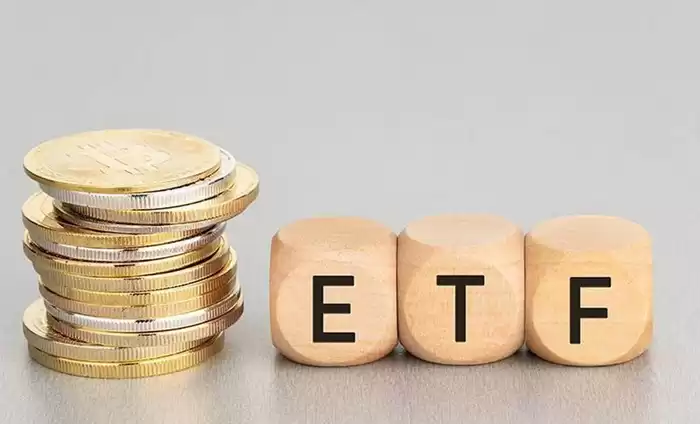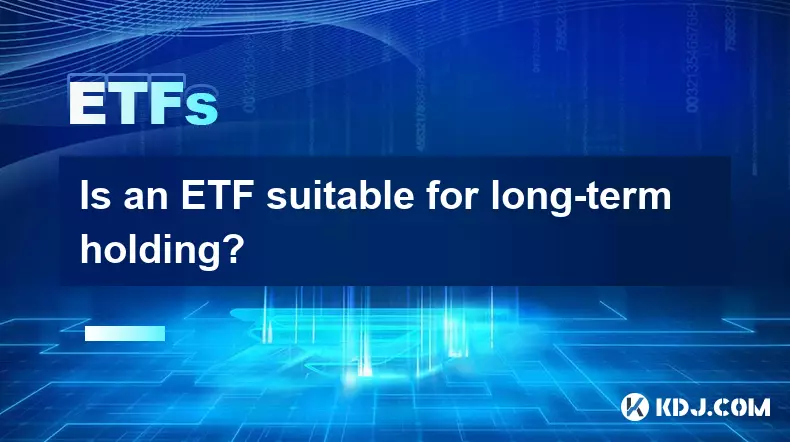-
 bitcoin
bitcoin $124586.364639 USD
0.62% -
 ethereum
ethereum $4670.671710 USD
3.33% -
 xrp
xrp $2.983701 USD
0.18% -
 tether
tether $1.000175 USD
-0.03% -
 bnb
bnb $1209.430642 USD
2.76% -
 solana
solana $231.365861 USD
0.51% -
 usd-coin
usd-coin $0.999665 USD
-0.02% -
 dogecoin
dogecoin $0.264657 USD
4.46% -
 tron
tron $0.346415 USD
1.60% -
 cardano
cardano $0.871586 USD
3.70% -
 chainlink
chainlink $23.451270 USD
7.56% -
 hyperliquid
hyperliquid $46.860071 USD
-2.96% -
 ethena-usde
ethena-usde $1.000120 USD
0.04% -
 sui
sui $3.611279 USD
1.08% -
 stellar
stellar $0.407149 USD
0.96%
how to compare etf performance
Comparing ETF performance involves assessing factors such as return on investment, risk-adjusted return, volatility, expense ratio, and liquidity to identify the most suitable one for your investment objectives.
Oct 10, 2024 at 01:12 am

Exchange-traded funds (ETFs) are popular investment vehicles that offer investors a diversified portfolio of stocks, bonds, or other assets. When comparing the performance of different ETFs, there are several key factors to consider:
1. Return on Investment (ROI)The ROI measures the percentage change in the value of an ETF over a specified period. This is typically calculated on a daily, weekly, or annual basis. A higher ROI indicates that the ETF has generated a greater return for investors.
2. Risk-Adjusted ReturnThe risk-adjusted return takes into account the level of risk associated with an ETF. The Sharpe ratio is a common measure of risk-adjusted return that calculates the excess return (return above the risk-free rate) per unit of risk (standard deviation). A higher Sharpe ratio indicates a better risk-adjusted return.
3. VolatilityVolatility measures the variability of an ETF's price over time. A higher volatility indicates that the ETF's price fluctuates more frequently and sharply. Investors may prefer ETFs with lower volatility if they are seeking stability in their investments.
4. Expense RatioThe expense ratio is a percentage of the ETF's assets that are used to cover operating expenses. A higher expense ratio reduces the potential return on investment.
5. Tracking ErrorThe tracking error measures the difference between the performance of an ETF and its underlying index or benchmark. A lower tracking error indicates that the ETF is closely following its benchmark.
6. Trading Volume and LiquidityTrading volume measures the number of ETF shares traded each day. Liquidity refers to the ease with which an ETF can be bought and sold. Higher trading volume and liquidity indicate that the ETF is actively traded and that investors can easily enter or exit positions.
Steps for Comparing ETF Performance:- Identify ETFs to Compare: Determine the specific ETFs that you are interested in comparing.
- Gather Historical Performance Data: Obtain historical performance data for the ETFs, including ROI, risk-adjusted return, volatility, expense ratio, tracking error, and trading volume.
- Analyze Data: Compare the data points for each ETF to assess their performance. Consider which factors are most important to you based on your investment goals and risk tolerance.
- Make a Decision: After thoroughly comparing the ETFs, make an informed decision about which one best meets your investment needs.
Remember, ETF performance can fluctuate over time. It is important to monitor your investments regularly and adjust your portfolio as necessary.
Disclaimer:info@kdj.com
The information provided is not trading advice. kdj.com does not assume any responsibility for any investments made based on the information provided in this article. Cryptocurrencies are highly volatile and it is highly recommended that you invest with caution after thorough research!
If you believe that the content used on this website infringes your copyright, please contact us immediately (info@kdj.com) and we will delete it promptly.
- BlockDAG, DOGE, HYPE Sponsorship: Crypto Trends Shaping 2025
- 2025-10-01 00:25:13
- Deutsche Börse and Circle: A StableCoin Adoption Powerhouse in Europe
- 2025-10-01 00:25:13
- BlockDAG's Presale Buzz: Is It the Crypto to Watch in October 2025?
- 2025-10-01 00:30:13
- Bitcoin, Crypto, and IQ: When Genius Meets Digital Gold?
- 2025-10-01 00:30:13
- Stablecoins, American Innovation, and Wallet Tokens: The Next Frontier
- 2025-10-01 00:35:12
- NBU, Coins, and Crypto in Ukraine: A New Yorker's Take
- 2025-10-01 00:45:14
Related knowledge

Is an ETF suitable for long-term holding?
Oct 01,2025 at 02:36am
Understanding ETFs in the Context of Cryptocurrency Investments1. Exchange-traded funds (ETFs) have gained significant traction in traditional financi...

What are ETF discounts and premiums?
Sep 29,2025 at 11:19pm
Understanding ETF Discounts and Premiums1. Exchange-traded funds (ETFs) are investment vehicles that trade on stock exchanges, much like individual st...

How do I evaluate an ETF?
Sep 22,2025 at 11:18am
Evaluating the Fundamentals of an ETF1. Examine the underlying index the ETF tracks to understand its investment focus. Whether it follows a broad mar...

What are the components of an ETF's fee structure?
Sep 30,2025 at 03:54am
Management Fees in ETFs1. Management fees, often referred to as the expense ratio, represent the primary cost investors pay for the operation of an ET...

What is ETF tracking error? How does it arise?
Sep 20,2025 at 03:18am
Understanding ETF Tracking Error in the Cryptocurrency Market1. Exchange-traded funds (ETFs) have become a significant bridge between traditional fina...

What factors determine ETF liquidity?
Sep 26,2025 at 05:00pm
Understanding ETF Liquidity Drivers1. The underlying assets of an ETF play a crucial role in determining its liquidity. When the securities within the...

Is an ETF suitable for long-term holding?
Oct 01,2025 at 02:36am
Understanding ETFs in the Context of Cryptocurrency Investments1. Exchange-traded funds (ETFs) have gained significant traction in traditional financi...

What are ETF discounts and premiums?
Sep 29,2025 at 11:19pm
Understanding ETF Discounts and Premiums1. Exchange-traded funds (ETFs) are investment vehicles that trade on stock exchanges, much like individual st...

How do I evaluate an ETF?
Sep 22,2025 at 11:18am
Evaluating the Fundamentals of an ETF1. Examine the underlying index the ETF tracks to understand its investment focus. Whether it follows a broad mar...

What are the components of an ETF's fee structure?
Sep 30,2025 at 03:54am
Management Fees in ETFs1. Management fees, often referred to as the expense ratio, represent the primary cost investors pay for the operation of an ET...

What is ETF tracking error? How does it arise?
Sep 20,2025 at 03:18am
Understanding ETF Tracking Error in the Cryptocurrency Market1. Exchange-traded funds (ETFs) have become a significant bridge between traditional fina...

What factors determine ETF liquidity?
Sep 26,2025 at 05:00pm
Understanding ETF Liquidity Drivers1. The underlying assets of an ETF play a crucial role in determining its liquidity. When the securities within the...
See all articles










































































